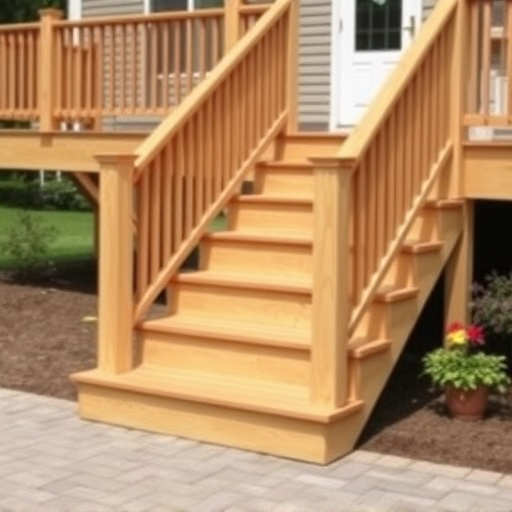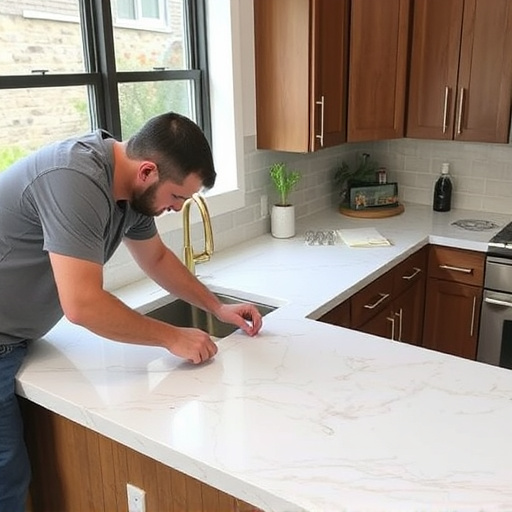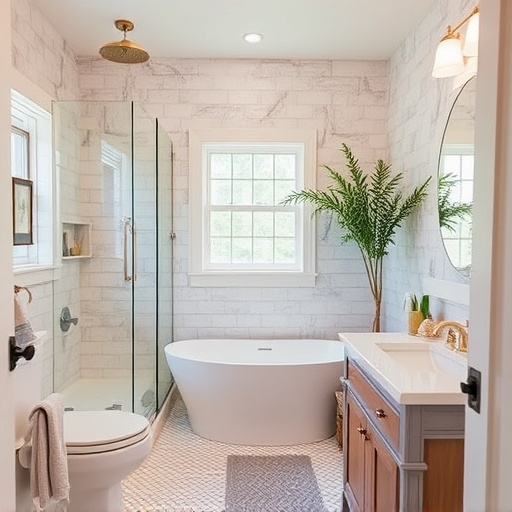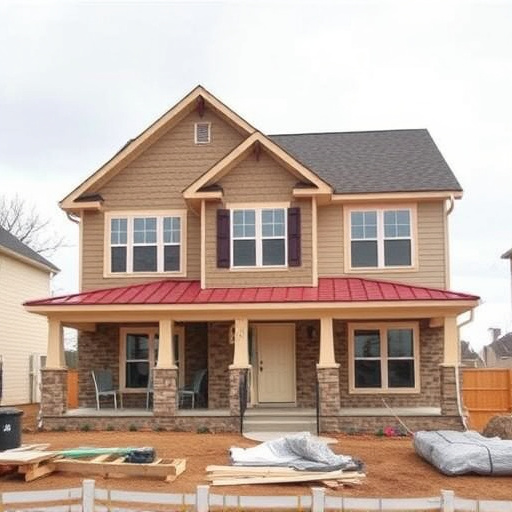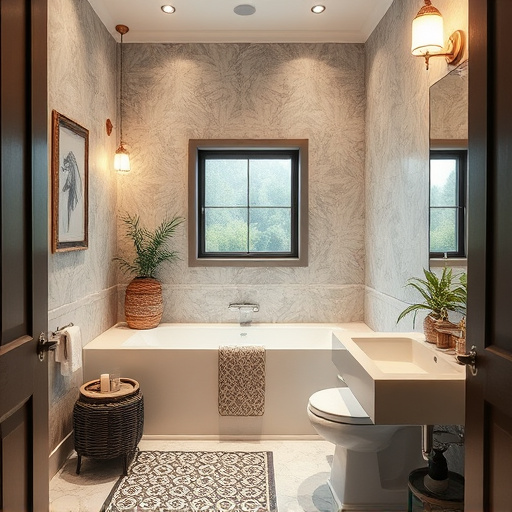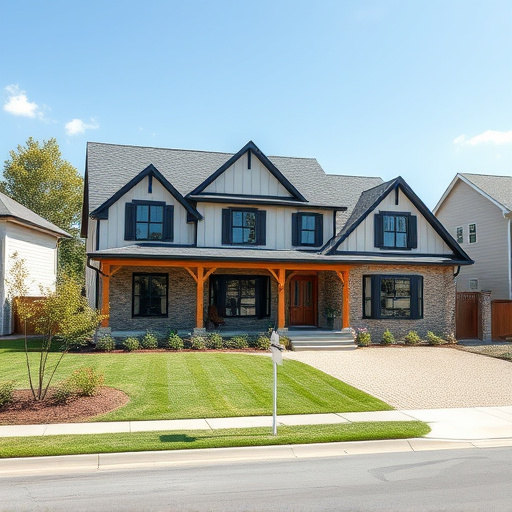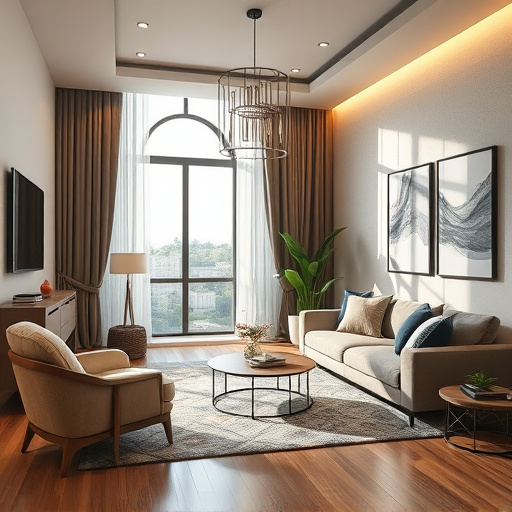Mastering scale and proportion in interior design is crucial for creating functional, visually appealing spaces. This involves balancing furniture size relative to room dimensions, guiding efficient circulation, and enhancing home improvement services. The right mix of compact and statement pieces promotes aesthetic harmony, with custom-made furniture adding elegance. Strategic implementation of varying scale levels during home additions or remodels creates visual interest, depth, and unique personalities in each room.
Selecting the appropriate scale for furniture within an interior design is a delicate art that significantly impacts visual balance and overall aesthetics. This article guides you through the process of understanding scale and proportion in interior design, highlighting critical factors to consider while choosing furniture scales. We’ll also share best practices for implementing different scale levels to create harmonious spaces that are both visually appealing and functional. Discover tips tailored to enhance your interior design expertise.
- Understanding Scale and Proportion in Interior Design
- Factors to Consider When Choosing Furniture Scales
- Best Practices for Implementing Different Scale Levels
Understanding Scale and Proportion in Interior Design
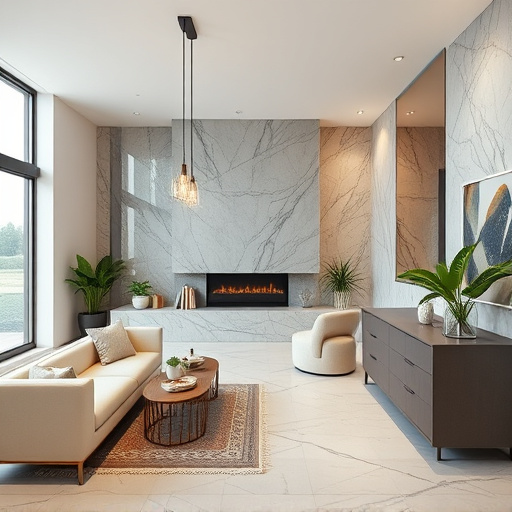
In interior design, understanding scale and proportion is key to creating functional spaces that are both aesthetically pleasing and harmoniously balanced. Scale refers to the size relationship between objects within a room, while proportion relates to the visual balance of those elements. Getting this right ensures a customized work area or living space that feels comfortable and inviting. When designing or rearranging, consider the dimensions of furniture pieces in relation to the overall size of the room. For instance, a large sofa might dominate a compact space, creating an imbalance. Conversely, small furniture in a vast room can make it seem incomplete.
Achieving the right scale and proportion enhances the functionality of your home improvement services. It guides where to place furniture, what sizes are suitable, and how to arrange them for optimal circulation. This understanding allows you to create spaces that serve their intended purposes effectively, whether it’s a cozy reading nook, an interactive family area, or a stylish dining zone.
Factors to Consider When Choosing Furniture Scales

When selecting furniture for your interior design project, considering the scale is paramount to achieving a harmonious and aesthetically pleasing space. Several factors come into play when making this decision. Firstly, the size of the room plays a pivotal role; a compact living area may require more proportionate pieces to avoid clutter, while a spacious master bedroom can accommodate larger, statement furniture.
Another key consideration is the existing furniture and fixtures in the room. Balancing new purchases with existing items creates visual harmony. For instance, if you’re planning a renovation service or home transformation, custom-made furniture can be tailored to fit perfectly within your interior design plans. This level of customization ensures that every element complements one another, resulting in a unified and elegant space.
Best Practices for Implementing Different Scale Levels

Implementing different scale levels in interior design is an art that can dramatically impact a space’s aesthetic and functionality. When considering home additions or whole house remodels, understanding scale becomes even more critical. Start by defining the primary function of each room—whether it’s a cozy reading nook or a grand living area—and then play with size to create visual interest. For instance, pairing a small, delicate side table with a large sofa creates contrast and balance.
In home renovation projects, mixing scale levels can add depth and character. A tall bookshelf next to a low-lying coffee table can provide both visual variety and practical storage solutions. Remember that scale isn’t just about furniture; it applies to accessories too. Incorporate various sizes of art, mirrors, and lighting fixtures to enhance the overall design. The key is to maintain harmony, ensuring no single element dominates the space while allowing each piece to contribute to the room’s unique character.
Selecting the appropriate scale for furniture within an interior design scheme is a delicate balance. By considering room proportions, visual weight, and desired ambiance, designers can effectively employ different scale levels to create harmonious spaces. This article has explored essential factors and best practices, offering a guide to help both professionals and enthusiasts navigate this crucial aspect of interior design.





